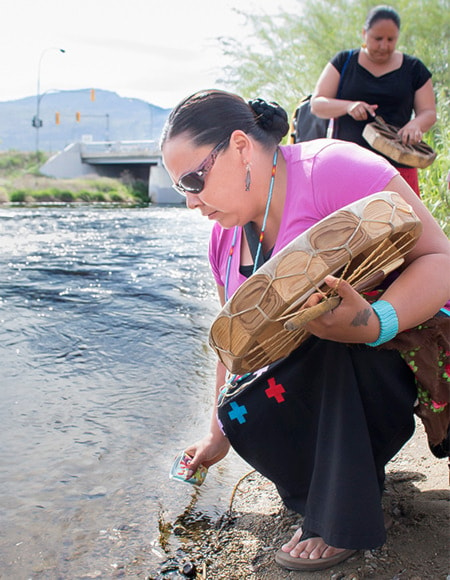The last few years have seen dramatic increases in the number of sockeye salmon returning to spawn in the Okanagan River, including a few even making it as far Skaha Lake.
But this year could be the year Skaha Lake sees a significant return, said Karilyn Alex, a fisheries biologist with the Okanagan Nation Alliance.
“This spring, fish passage will potentially exist at the outlet of Skaha dam. Fish will make it up as far as Penticton,” said Alex, who made a presentation to council last week on a plan to restore salmon spawning beds lost when the Okanagan River was channelized in the 50s.
The ONA has been working with agencies from all levels of government under the Okanagan River Restoration Initiative to rehabilitate the river, she explained, though most of the projects have been in the Oliver area.
“Between 2008 and 2013, we’ve reconnected sections of the river, we have connected side channels, created islands and bars and then spawning platforms,” said Alex.
“After quite a few years of work, there is a reintroduction of salmon migrating up the Columbia River, 900 kilometres from the ocean, back into Penticton where they once were over 100 years ago.”
The returning salmon include not only large numbers of sockeye, but some chinook and steelhead as well. Those will be looking for spawning areas, as are the resident kokanee and rainbow trout.
“These fish will be back and this could be some of the largest runs of sockeye salmon we have ever seen on record returning this year,” said Alex.
In the 70s, spawning platforms were built that were suitable for the kokanee and rainbow trout. Alex said the plan is to now build two spawning areas suitable for the larger fish between the Okanagan Lake outlet dam and the first bridge on the channel.
Coun. Helena Konanz wanted to know if the spawning platforms would affect rafters travelling down the channel.
“I don’t want them to disrupt the platform, and obviously, we have some people that really look forward to that every summer,” Konanz said.
Alex said the recreational component had been a big part of their considerations, not only for the long term when the platforms are done, but also during the construction period.
It would become a problem, she said, only if the river dropped to unusually low levels, levels that haven’t been seen in the last 20 years.
As well, the sockeye and steelhead spawning periods both fall outside the tourist season, when the number of rafters is at its height.
“The peak spawning for this run has been, in Oliver, between Oct. 15 to Oct. 20. The steelhead are similar to the rainbow trout, so they would be spawning in April and May,” said Alex. “You wouldn’t have a lot of overlap with recreational interests.”
But in order to not interrupt either the spawning time or the eggs, the construction will have to be done in a narrow window, between July 22 and Aug. 30.
“You can get an extension and we have up until Sept. 15. We feel very confident we know when these fish will be returning and it is not in that window,” said Alex.
The timing of the work will depend on a number of factors, including the water level in the river, but the hope is to take advantage of the extension and do the work as late in the season as possible.
“Our preference originally was to work just after the long weekend to Sept. 15, just because we know it would be much easier from a safety perspective,” said Alex.
Even if they were only able to do one of the platforms this year, she added, it wouldn’t be huge problem for the project.
“We could easily do one and come back the next year and finish it up,” she said.
“The funds have been secured for that.”
